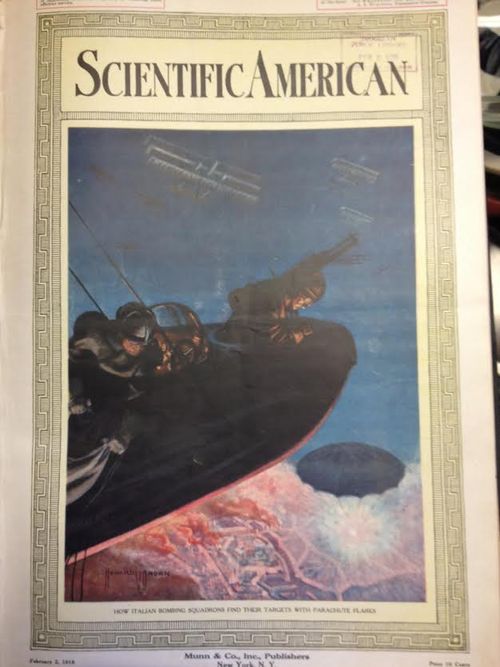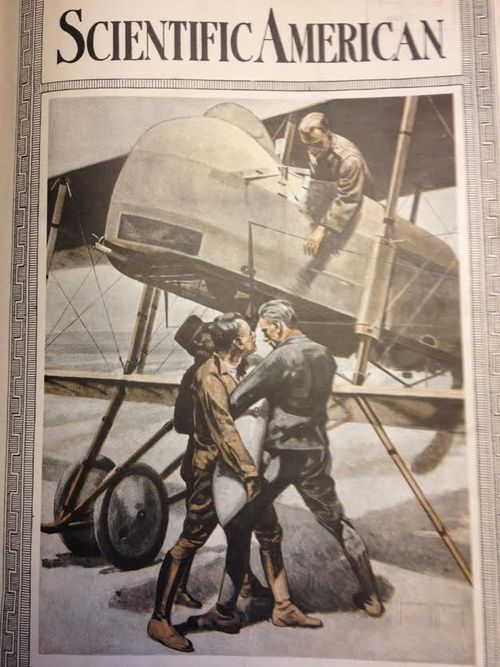JF Ptak Science Books Post 2282
As I assemble the WWI stuff here for a possible anniversary blog of interesting war and homefront images (nothing like planning and foresight for these things) I was putting together the war years for some of the journals, including the magnificent Scientific American. Flipping open the top volume (1918) revealed a big blue/dark print that was entirely unexpected--an Italian bomber carrying out a mission at night using flares to illuminate the target area.
At first I had an irrational serendipitous memory of Santa Claus using a lantern to find his way, but, well, as I said it was an irrational association. (There's another odd memory of a picture of Santa in 1917/18 delivery his presents on a flying tank, but that's another story...)
I had only once before seen a portrayal of an aerial night attack, depicting a futuristic flying machine--a dirigible in this case--using electric lights to target fleeing villagers and warriors of an African town. My memory is not working on this one, so unfortunately I cannot date and reference it, though I do believe it appeared in the Illustrated London News around 1907 or so, just a few years before someone started dropping explosives from planes for real.
But this image (appearing in the February 2 1918 issue) is for something quite real, though its effectiveness (to me, as a non-historian of this field) seems highly suspect. What we see are three airmen in an Italian Caproni1 releasing flares above what they assumed to be a target. The gunner at front watches closely as the co-pilot (there are two men in that cockpit, one being mostly obscured) readies another flare.
By the way, here's one way of loading the payload (from a few issues later):
The general characteristics of the Caproni (3) aircraft, via Wikipedia:
- Crew: four (pilot, co-pilot, front gunner, and rear gunner/mechanic)
- Length: 11.05 m (36 ft 3 in)
- Wingspan: 22.74 m (74 ft 7 in)
- Height: 3.7 m (12 ft 2 in)
- Wing area: 95.6 m2 (1,029 sq ft)
- Empty weight: 2,300 kg (5,071 lb)
- Max takeoff weight: 3,800 kg (8,378 lb)
- Powerplant: 3 × 6-cyl. water-cooled in-line piston engines, 112 kW (150 hp) each
Performance
- Maximum speed: 137 km/h (85 mph; 74 kn)
- Range: 599 km (372 mi; 323 nmi)
- Service ceiling: 4,844 m (15,892 ft)
- Rate of climb: 2.083 m/s (410.0 ft/min)
Armament
2 × 6.5 mm or 7.7 mm FIAT-Revelli machine guns





Comments